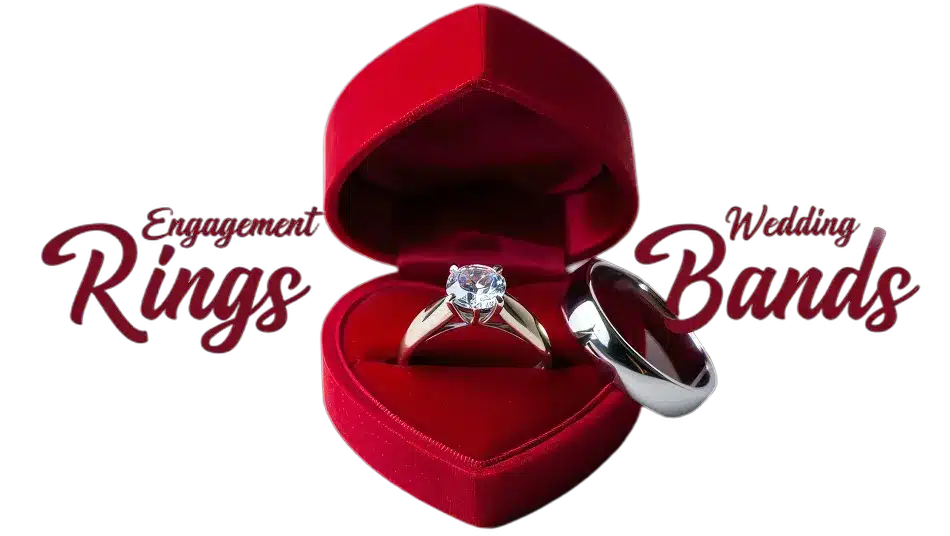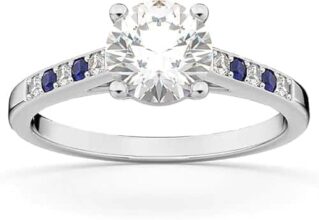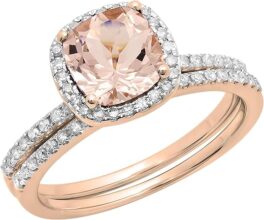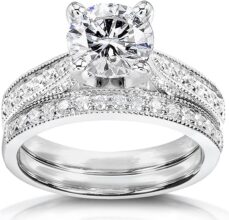
Welcome to the World of Diamonds
Did you know that the sparkle of a diamond can be influenced by four key characteristics? When it comes to choosing the perfect engagement ring, understanding the 4 Cs—Cut, Color, Clarity, and Carat—is essential. These elements not only define how beautiful a diamond appears but also impact its value and your satisfaction with your choice.
Imagine the thrill of seeing your partner’s eyes light up as they behold the ring you’ve chosen with care. Yet, without knowledge of the 4 Cs, that moment could be overshadowed by doubt. Each “C” plays a crucial role in ensuring that your diamond truly represents your love story.
In the sections to follow, we’ll delve into how to evaluate each of these aspects. Together, we’ll navigate the world of diamonds, helping you make an informed and confident choice for this significant purchase. Get ready to unlock the secrets behind your dream engagement ring!
Understanding Cut: The Heart of the Diamond
When it comes to diamonds, cut is often regarded as the most vital of the 4 Cs. Why exactly is that? The cut of a diamond determines its overall appearance and sparkle, impacting everything from brilliance and fire to scintillation—the way it shimmers and contrasts with light. In simple terms, a well-cut diamond can look far more radiant than a larger, poorly cut stone. Let’s delve deeper into the significance of cut and how you can assess it when selecting your perfect engagement ring.
The Importance of Cut
Think of the cut as the diamond’s personality; it shapes how light interacts with the gem. A well-crafted diamond reflects light brilliantly, producing that breathtaking sparkle you’ve always imagined. Here are a few key points to keep in mind:
A diamond that is cut too shallow or too deep will reflect light poorly, leading to a more muted look. It’s all about balance—the ideal cut optimizes the way light enters, reflects off the internal facets, and exits, creating that dazzling effect.
Assessing Cut Quality
When evaluating a diamond’s cut, you will often encounter a grading scale that ranges from Poor to Ideal (or Excellent). Here are some aspects to consider:
Popular Cut Styles
The cut style is another crucial consideration. Each shape brings its unique aesthetics, and some might suit your partner’s style better than others. Here are a few popular styles you might consider:
Each cut can complement different ring settings, and your choice will reflect not only your partner’s personal style but also your creativity in combining elements.
Tips for Choosing the Right Cut
As you begin your search for the perfect diamond, here are a few tips to ensure you select a stunning cut:
- Consider Personal Style: Look at your partner’s jewelry preferences—do they lean towards classic pieces or more modern designs?
- Prioritize Quality: A diamond with an excellent cut will generally outperform a higher carat weight or better color and clarity, so make cut your top priority.
- Visualize Before You Decide: If possible, view diamonds in various cuts side by side. This can significantly help you gauge their brilliance and how they may appear on the finger.
Now that you’ve grasped the lively essence of cut, you’ll want to explore how color affects a diamond’s allure. Understanding how to identify the right hue will further refine your search for the perfect engagement ring.
Decoding Color: Finding the Right Hue
Once you’re confident in your understanding of cut, the next dimension to explore is the color of the diamond. The beauty of a diamond’s color can drastically influence its overall appeal, making it an essential factor in your selection process. Let’s break down how color is graded, why it matters, and how you can choose a hue that complements both your taste and budget.
The Color Grading Scale
Diamonds are graded on a scale that typically ranges from D to Z. Here’s how it works:
Understanding this scale will help you make informed decisions when considering both aesthetics and budget.
Finding Your Perfect Hue
When selecting a color grade, it’s crucial to consider your personal style as well as the metal of the ring. The metal can either enhance or mute the diamond’s color:
Personal Style Considerations
Your partner’s personal style plays a tremendous role in determining the right diamond color. Do they gravitate toward classic elegance or modern trends? Here are some considerations to guide you:
The Influence of Environment and Lighting
When evaluating color, keep in mind the importance of lighting. The way a diamond appears can change significantly based on its surroundings:
Tips for Choosing the Right Color
Before you make your final choice, consider these practical tips to find the right hue for your engagement ring:
- Bring Along a Comparison: If possible, take a few stones of varying colors to observe how they look next to each other and determine which captures your eye.
- Think About Maintenance: Lower color grades can display an effect of tint, which could require a bit more upkeep to keep them looking their best, especially with a white metal setting.
- Stay True to Your Budget: While the allure of a colorless diamond is strong, remember that excellent value can often be found in near-colorless stones, allowing you to allocate funds toward a higher cut or carat.
As you delve deeper into the characteristics of what makes the perfect engagement ring, the next vital aspect to consider is the clarity of your diamond. Understanding clarity will equip you with the knowledge needed to assess even the finest details of your potential purchase.
Clarity Counts: Assessing Diamond Purity
As you navigate the enchanting world of diamonds, understanding clarity is crucial—it’s about revealing the true purity of your stone. Clarity is the grading of a diamond based on the presence of internal or external flaws, known as inclusions and blemishes. In this section, we’ll explore what these terms mean, how they affect the diamond’s look, and share tips to help you strike a balance between clarity and your budget.
Understanding Clarity
Clarity is one of the key factors determining your diamond’s overall appearance and value. Unlike cut or color, which often captures immediate attention, clarity may require a discerning eye to appreciate fully. Here’s a quick breakdown of what you should know firsthand:
The Clarity Grading Scale
Diamonds are graded on a clarity scale that typically ranges from Flawless (FL) to Included (I). Here’s a simplified version of this scale:
How Clarity Affects Appearance
While clarity influences a diamond’s aesthetic, the impact often varies between different stones. For example, an SI1 diamond may look visually stunning, especially when set in a beautiful ring. Many people find that inclusions are less impactful when the diamond is well-cut and sparkles brightly.
Balancing Clarity and Budget
When it comes to clarity, here are some strategic approaches to ensure you get the best bang for your buck:
Prioritize Cut and Color: If you have to compromise, consider focusing on achieving a higher grade for cut and color, which directly affects its brilliance. A well-cut diamond can disguise minor inclusions.
Choose the Right Setting: Some settings can enhance a diamond’s appearance by distracting from inclusions. Consider halo or intricate designs that draw the eye and give the illusion of a more flawless stone.
Know Your Tolerance: Determine how much inclusions matter to you. If you’re someone who prefers pristine visuals, you may be inclined to invest in higher clarity grades. However, if you value size or unique features, opting for an SI diamond can result in substantial savings.
View Diamonds in Different Lighting: Just as you did while assessing color, evaluating diamonds under various lighting can highlight any flaws differently. You might notice that some inclusions become less apparent in lower lighting.
Real-Life Example
Picture this: You’re at a jeweler’s, and you see two diamonds side by side—an SI1 and an VS2. The SI1 is almost the same price as an excellent cut VS2, but the SI1 has visible characteristics at first glance. In bright light, the VS2 sparkles dramatically due to its superior cut, drawing attention away from any minor inclusions it may possess. In this scenario, the VS2 may be worth the investment, as it makes a striking impression.
Choosing the Right Clarity for Your Needs
Here’s how to ensure you select a diamond that matches your aesthetics and budget while keeping clarity in mind:
With clarity now demystified, you’re one step closer to your ideal diamond. In the next section, we’ll delve into the weight of your diamond, specifically carat weight—its implications for size, value, and how it integrates into your unique vision for an engagement ring.
Carat Weight: Size Matters, But Not Just for Looks
When you think about engagement rings, carat weight often takes center stage in conversations about a diamond’s beauty and value. Carat weight refers to the size of the diamond, and while it’s a crucial factor, it’s essential to understand that higher carat weight doesn’t always equate to a more stunning diamond. Let’s unpack how carat weight influences your choice, what you should consider regarding size perception, and tips for finding the right balance for your engagement ring.
Understanding Carat Weight
The term “carat” originates from the carob seeds historically used as a weight measure for gemstones. Today, one carat equals 200 milligrams. Here’s what you need to know about how carat weight affects your diamond:
While size might be impressive, it’s important to remember that beauty is subjective, and various factors come into play when you’re selecting the ring that’s just right for you.
Shape and Cut: The Hidden Variables
If you’re dreaming of a show-stopping diamond but feel hesitant about investing in a larger carat weight, consider how shape and cut will play a critical role in perceived size:
Choosing the Right Carat Weight for Your Ring
Deciding on the perfect carat weight means considering both your aesthetic preferences and your budget. Here are some practical tips to guide your decision:
- Assess Your Style Preferences: Does your partner prefer a classic look or a statement piece? Understanding their taste can help in determining the most fitting carat weight.
- Consider the Setting: A halo setting, for instance, can create an illusion of a larger diamond by surrounding it with smaller stones. This allows you to choose a slightly lower carat weight while still achieving a dramatic effect.
- Explore Half Carats: Diamonds are available in various weights, including half carats (e.g., 0.5, 1.5). Opting for a weight just under a milestone can save you money without compromising on appearance. For example, a 1.9-carat might look just as stunning as a 2-carat but can be significantly cheaper.
- Visualize Before You Purchase: Whenever possible, try on diamonds of different carat weights. Seeing how they look in proportion to the recipient’s hand and finger size can shift your perspective and expectations for weight.
Real-World Example
Imagine strolling through a jewelry store and spotting two diamonds—one is a 1.5-carat round brilliant, while the other is an oval diamond weighing 1.2 carats. Upon close inspection, you notice that the oval diamond appears larger despite its lower weight. This is due to its shape and how it projects light. Additionally, its ideal cut generates stunning brilliance, drawing the eye and capturing attention.
Finding a Balanced Approach
As you embark on this exciting quest for the perfect engagement ring, remember that carat weight is essential, but it doesn’t have to overshadow the other characteristics. A diamond’s beauty can come from its cut, clarity, and color, which can all be harmonious with the carat weight you choose.
By considering these elements, you can select a ring that will not only impress but also capture your partner’s unique style and blend perfectly with their personality. As you explore the world of diamonds and their excellence, the next step is to put all this knowledge into practice. We’ll now transition to wrapping up the essential insights for your journey toward selecting the perfect engagement ring.
Putting It All Together: Your Perfect Engagement Ring
Understanding the 4 Cs—Cut, Color, Clarity, and Carat weight—is essential in your quest for the perfect engagement ring. Each aspect contributes to the overall beauty and value of the diamond, and together, they help you express your unique love story. With this knowledge, you can confidently navigate your options, ensuring that your selection is a true reflection of your commitment.
Remember, this ring will symbolize a lifetime of love, so take your time to choose wisely. Whether you prioritize brilliance, hue, purity, or size, trust your instincts. After all, the perfect engagement ring is not just a piece of jewelry; it’s a promise of forever. Dive into the process with enthusiasm, and you’ll find a ring that you—and your partner—will cherish for a lifetime.








